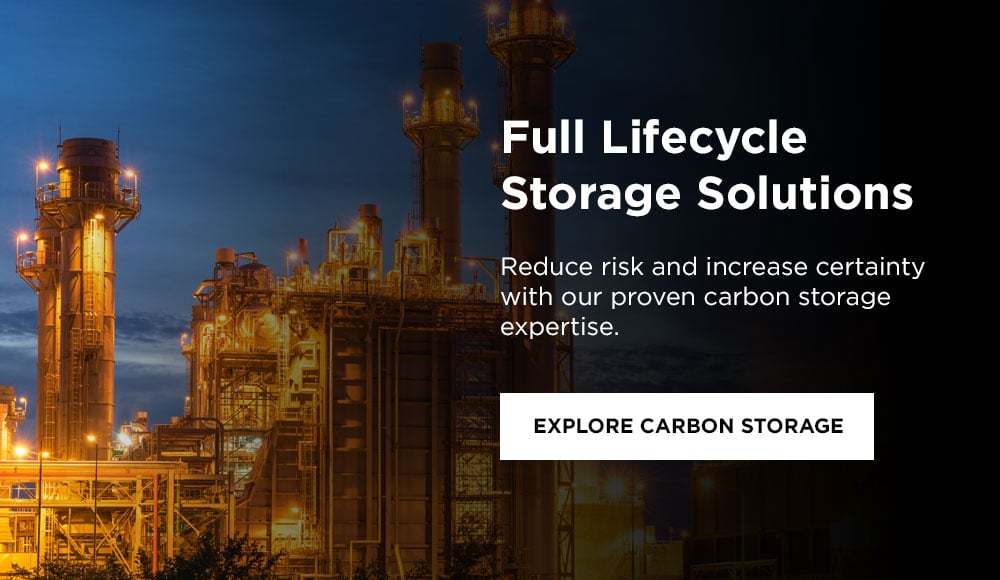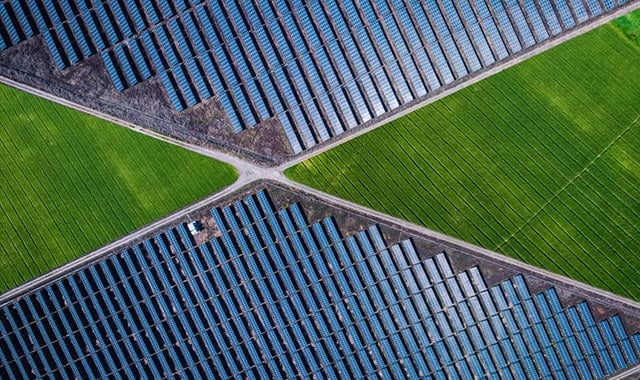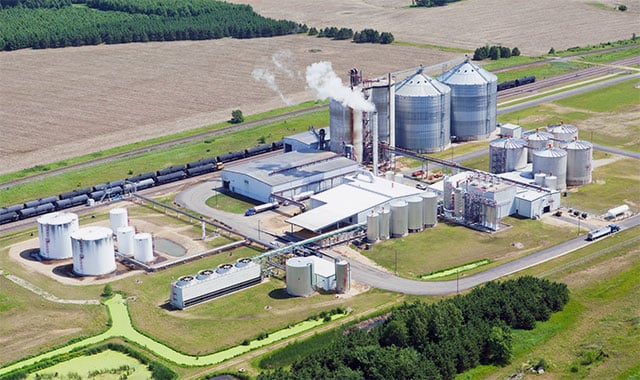6 Key Elements of CCS Site Operations

With carbon capture and storage (CCS), capturing CO2 emissions is just the beginning.
After the geological storage site is determined, a permit (such as a Class VI UIC permit) is secured, injection well(s) are drilled, and a capture system is put into place, the CCS project is just getting started.
Based on current legislation, a carbon dioxide (CO2) capture and storage project can generate tax credits/payments for up to 12 years through 45Q tax credits (if located in the United States). Depending on storage capacity, an injection well can be used to capture and store CO2 for over 30 years.
This is why proper carbon storage site operations is crucial to maximizing your carbon capture and storage investment. Read on to learn the 6 key components of CCS site operations, and how to leverage them for success in the long term.
Table of Contents
Jump to Section:
CCS Basics
First, let's go over the basics of CCS.
What is CCS?
CCS, or carbon capture and storage, is the process of capturing and storing carbon dioxide emissions that would otherwise be released into the atmosphere. The captured CO2 is typically stored in deep geological formations such as saline aquifers, depleted oil and gas reservoirs, and coal beds.
The term "CCUS" is often used interchangeably with CCS and stands for carbon capture, utilization, and storage.
Who is CCS for?
A variety of organizations can benefit from CO2 capture and storage, including companies in these industries:
- Oil, gas and other fossil fuels
- Power generation
- Ammonia or fertilizer
- Direct air capture
- Enhanced oil recovery (EOR)
- Other industrial
Learn if your company is eligible to monetize carbon emissions, and if so, how to get started with CCS.
CCS Site Operations
What is It?
CCS site operations is the process by which a carbon capture and storage project is maintained and optimized throughout the lifetime of the project. Carbon storage operations includes a variety of tasks ranging from monitoring and inspection to compliance and site closure.
Why It's Important
Expert site operations are essential for multiple reasons, including:
- Maximizing tax credit profitability
- Minimizing operational risk
- Ensuring compliance across project stages
CCS Site Operation Stages
Successful CCS site operations includes 6 key components:
- Injection Monitoring
- Plume Modeling and Monitoring
- Well Operation, Inspection, and Maintenance
- Reporting and Compliance
- Decommissioning and Site Closure
- Long Term Monitoring
Read on for a breakdown of each key element and download our "Solving the Storage Problem for Carbon Capture and Storage (CCS)" white paper to set your CCS project up for long-term success.
Injection Monitoring
Injection monitoring refers to the supervision of pressures and injection rates to ensure they're aligned with the procedures outlined in the storage permit.
Injection monitoring begins after the storage well is drilled, and includes:
- Monitoring and optimization of injection rates
- Recording the amount of carbon dioxide stored
- Maintaining safe pressures
Why It's Important: Successful site operations includes injection monitoring to maintain a safe operation and comply with the carbon storage permit.
Plume Modeling and Monitoring
Plume modeling and monitoring is the process of keeping an eye on the CO2 plume during and after injection to:
- Determine plume behavior
- Predict future plume movement
- Ensure safe CO2 sequestration based on the model
Expert monitoring of plumes involves a variety of subsurface CCUS technologies, including:
- Seismic imaging (A geophysical tool for characterizing or estimating geologic formations based on seismic data)
- Geophysical logging (A subsurface technique used to gather data by lowering instruments into drilled boreholes, also known as borehole logging)
- Distributed Temperature Sensing systems (Known as DTS for short, Distributed Temperature Sensing systems monitor underground temperature over long distances, thanks to fiber optic sensor cables)
- Fluid chemistry
Why It's Important: A successful carbon storage site operation will include plume modeling and monitoring to change the injection strategy (if needed) based on the behavior of the plume.
Well Operation, Inspection, and Maintenance
Well operation, inspection, and maintenance is the ongoing process of monitoring and inspecting the injection well, as well as troubleshooting and taking remedial action as needed.
This crucial element of site operations can include:
- Continuous passive downhole monitoring (A seismic tool to monitor deformation based on downhole conditions)
- Routine site visits and visual inspections by subsurface experts
- Sample collection for fluid chemistry analysis
Why It's Important: Proper site operations incorporates an injection well operation, inspection, and maintenance strategy to maintain the well, troubleshoot emerging problems, and make injection adjustments based on data that is gathered.
Reporting and Compliance
Carbon capture and storage site reporting and compliance refers to the practice of providing the Internal Revenue Service (IRS) and Environmental Protection Agency (EPA) with required project and injection details.
Project developers must submit quarterly and annual reports to the IRS with proof of the amount of carbon dioxide that has been injected. The EPA requires semi-annual reports to maintain environmental compliance.
Why It's Important: A successful site operation needs reporting and compliance for 3 main reasons:
- To ensure tax credits like 45Q can continue to be collected
- To verify the project is in line with the permit
- To show that the CO2 is not escaping into the atmosphere
Decommissioning and Site Closure
Decommissioning and site closure is defined as the closing of the injection well and total remediation of the CCS project site.
Closure and decommissioning activities include:
- Removal of wellhead and plug well to prevent CO2 from escaping
- Creation of monitoring wells
- Site remediation based on EPA and permit guidelines
Why It's Important: A successful CCS project should end with closure and decommissioning to make sure the CO2 will be safely stored in the long term, as well as all environmental safety requirements fulfilled.
Long-Term Monitoring
Long-term monitoring is the process of observing the CO2 plume for up to 50 years after a site is closed unless the plume can be shown to be stabilized.
Proper long-term monitoring activities include:
- Monitoring of plume movement with passive downhole sensors
- Keeping models updated to match the actual plume
- Reporting to the EPA with documentation
Why It's Important: Long-term monitoring is crucial for CCS project success to comply with environmental regulations, as well as to explore the possibility of closing monitoring after 5 to 10 years.
Achieving Site Operations Success
A successful CO2 capture and storage project hinges on skillful site operations. Working with an experienced and multi-disciplinary partner like our Carbon Storage Services team sets producers up to maximize value from CCS throughout the project's lifetime.

Related Blogs
BATTELLE UPDATES
Receive updates from Battelle for an all-access pass to the incredible work of Battelle researchers.








